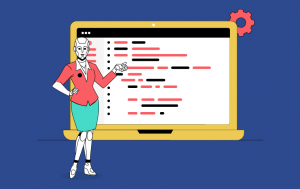Lightroom vs Photoshop, what are the advantages and disadvantages of each, similarities and differences? When you start out in photography, it is very common to hesitate between Lightroom and Photoshop to edit your photos. Which software is the most efficient? Which solution is best suited to beginner photographers or professionals?
The two Adobe software programs have many similarities but also differences in the precision of their tools and the storage of images. While Photoshop offers greater precision in retouching, Lightroom offers the ability to process more images at once and create catalogs. Ideal for photographers. Remember the synergy between the two which allows them to be used together in order to complement each other if necessary. All this at a more affordable price than that offered, a few years ago, for Photoshop alone.
Lightroom vs. Photoshop
A little history
If everyone knows Photoshop, it's because this retouching and graphic creation software is the ancestor of digital retouching . Created in 1987 to retouch the first digital images, Photoshop quickly became the reference for retouching, image manipulation and photomontage.
In 2002, Adobe decided to begin development of Shadowland , a project that would become Lightroom, to address the public of photographers who only used a tiny part of Photoshop's capabilities, and above all to dethrone Apple's Aperture. It was in 2007 that the first version of Lightroom was finalized and the software gradually took off to become today the tool used by the majority of amateur and professional photographers.
What are the differences between Lightroom and Photoshop?
At first glance, their functionality is very similar. In addition, these two software programs are published by Adobe.
Lightroom is photo processing software, while Photoshop is photo editing software.
The specifics of Lightroom
Sort and classify your photos
Lightroom allows you to have all your photos in one place, it's a sort of library, a catalog. To make searches easier, you can even annotate your photos or assign them one or more keywords.
Image processing
This is THE feature of Lightroom. This software allows you to process your images directly, by modifying the brightness or colors. In addition, it allows amateur or professional photographers to process a large number of photos quickly because Lightroom can edit several photos at the same time. And above all, it saves the original of your photos. When you apply an edit, it is applied to a copy of your image, whereas with Photoshop, if you are working on the original photo, your edits will be applied directly to it.
Image processing is the main difference between Photoshop and Lightroom.
Some editing features
Lightroom still allows you to make some small adjustments. You can apply filters and crop your photos. However, you will not be able to make major modifications as Photoshop allows.
The specifics of Photoshop
An unparalleled retouching system
There's a reason why Photoshop is the most used photo editing software in the world! Indeed, this software contains an impressive number of tools to retouch your photos. You will be able to make large modifications as well as very light and very localized modifications on part of your image thanks to the layer system.
Create new images
Photoshop, unlike Lightroom, will allow you to create images, posters, flyers from scratch. This is why, in addition to photographers, this software is also widely used by designers, graphic artists, etc.
More than a difference between Lightroom and Photoshop, a synergy .
How to use both and benefit from this software?
Lightroom allows you to make very light and quick modifications while Photoshop will allow you to modify everything you want with more precision and therefore a little more time. And that's why 90% of photographers don't use Lightroom or Photoshop, but Lightroom AND Photoshop because they complement each other perfectly.
Indeed, Adobe has ensured that the interactions between the two software programs are maximum. Lightroom will allow you to classify, sort, annotate, something impossible in Photoshop, to make simple modifications in series. However, it's also very simple to start your work in Lightroom, then import it to Photoshop, and finally return to Lightroom to organize, add notes, and share your work.
The differences between Lightroom and Photoshop
Even though Lightroom and Photoshop have things in common, these two software programs were designed for different uses, which leads to some essential differences.
Lighter file management with Lightroom
In Lightroom, adjustments applied to a photo are made in a non-destructive manner . In Photoshop, this is not necessarily the case.
Non-destructive editing allows you to correct a photo without altering the original file .
This is also possible in Photoshop, but only if you use adjustment layers or Smart Objects and not pixel editing.
In Lightroom, all edits are saved in the catalog and not on the image file. It's a sort of database that contains all the modifications made to photos. If you lose your catalog file, you lose all your edits, but not your raw photos.
Photoshop works differently. When you open a photo in the latter and save your edits, the software overwrites the source file if it is a JPEG, PNG or TIFF. If you open a RAW file , Photoshop will offer to save your editing to a new file, for example a PSD file.
If you need to edit a large number of images, Lightroom is a more efficient solution in terms of storage space on your disk .
Sufficient editing tools in Lightroom, but more advanced in Photoshop
In terms of retouching, the big winner is of course Photoshop which offers more creative possibilities . But where Photoshop has the raw power and myriads of tools to retouch your images, Lightroom is a real Swiss army knife of photography, bringing together the most important tools and allowing you to do 95% of general retouching.
Photoshop, however, retains the advantage with its very efficient layer system – which has made it successful.
Smoother workflow in Lightroom
In terms of workflow, undeniable advantage for Lightroom . From importing photos to printing, to the photo book, to the web gallery, including editing and then retouching, Lightroom allows you to manage all stages of your photographic activity.
Photoshop is more of a link in the development chain. For certain photos with precise or complex retouching or photomontage, Photoshop wins. But for a series, a wedding, photos taken in a short period of time, Lightroom offers all the tools allowing you to manage your image library, add keywords, and classify them by folder.
What are the opinions of photographers between the 2 software? On photo development? The retouching?
Lightroom is an image editor specifically designed for photographers. The tools available are fewer since only the features reserved for photographers are retained. Using Lightroom is more intuitive and easier. The software can be used by both a beginner and a professional photographer.
Lightroom is extremely popular with event photographers such as wedding professionals.
In fact, around 90% of a photographer's post-processing work can be accomplished in Lightroom. Then move on to Photoshop for the in-depth retouching and image post-processing manipulations that certain images (or clients) may require.
Lightroom significantly reduces post-processing costs with incredible time savings thanks to the keyword catalog.
Good to know: all you have to do is select all your photos and drag them into the Photoshop window as a single unit so that they all open automatically in the Camera Raw Film Strip.
Photoshop also allows you to make deep edits in the image, which makes Photoshop a powerful post-processing image manipulation program.
Lightroom covers 90% of the photographer's needs since the tools present in this editing software are also in Photoshop. Abode has simplified some tools in Lightroom that come from Photoshop to make Lightroom easier to use.
Should you take Lightroom Classic?
Today we are talking about Lightroom classic and Lightroom with cc which means “ creative cloud ”. In fact, Lightroom classic is nothing other than the old version of the standard software, that is to say Lightroom 4, 5 or 6, only the name has evolved. It is a computer application that can be downloaded through a subscription system set up by Adobe . No difference is observed compared to previous versions apart from a few small options which have been added but on the other hand it is extremely faster than before.
Lightroom, basically, is a bit like Lightroom classic; but specially designed to be used on your phone or tablet . In addition, the photos are not stored locally but rather in the cloud . To be clear, you can work with Lightroom but all photos are in the cloud and accessible anywhere with your cell phone, computer, tablet.
While Lightroom classic is a desktop application where photos are embedded in it or on a hard drive.
Important thing to note: you can connect this version to Lightroom to send your photos between the two software .
So why not just stick with Lightroom?
The problem is that Lightroom doesn't necessarily have the same options as Lightroom classic. Indeed although the two have similarities, certain parameters are nevertheless absent in Lightroom in particular, HDR photo, side by side comparison, exploration parameters, printing, Map tool, face recognition and add this is due to the lack of history. In addition, with Lightroom, you are limited in weight because all photos must necessarily be stored in the cloud.
What are the prices between Lightroom and Photoshop?
Photoshop has been one of the most pirated software on the web due to excessive pricing for individuals. Indeed, Photoshop has long been too expensive , we are talking about a single software for almost 1000€ investment per license.
It became so easily downloadable illegally on peer-to-peer platforms that rumors began to circulate that Adobe was allowing this to happen to popularize Photoshop and definitively establish its leadership in the graphics software market.
Today, we can access this software at a reasonable price: €11.99/month for the Creative Cloud Photography offer including Photoshop CC and Lightroom CC , whereas a few years ago Photoshop in version CS6 was sold €799 per license.
Today, Photoshop is only available as a subscription , and Lightroom remains available at a price of €130 as a standalone version .





